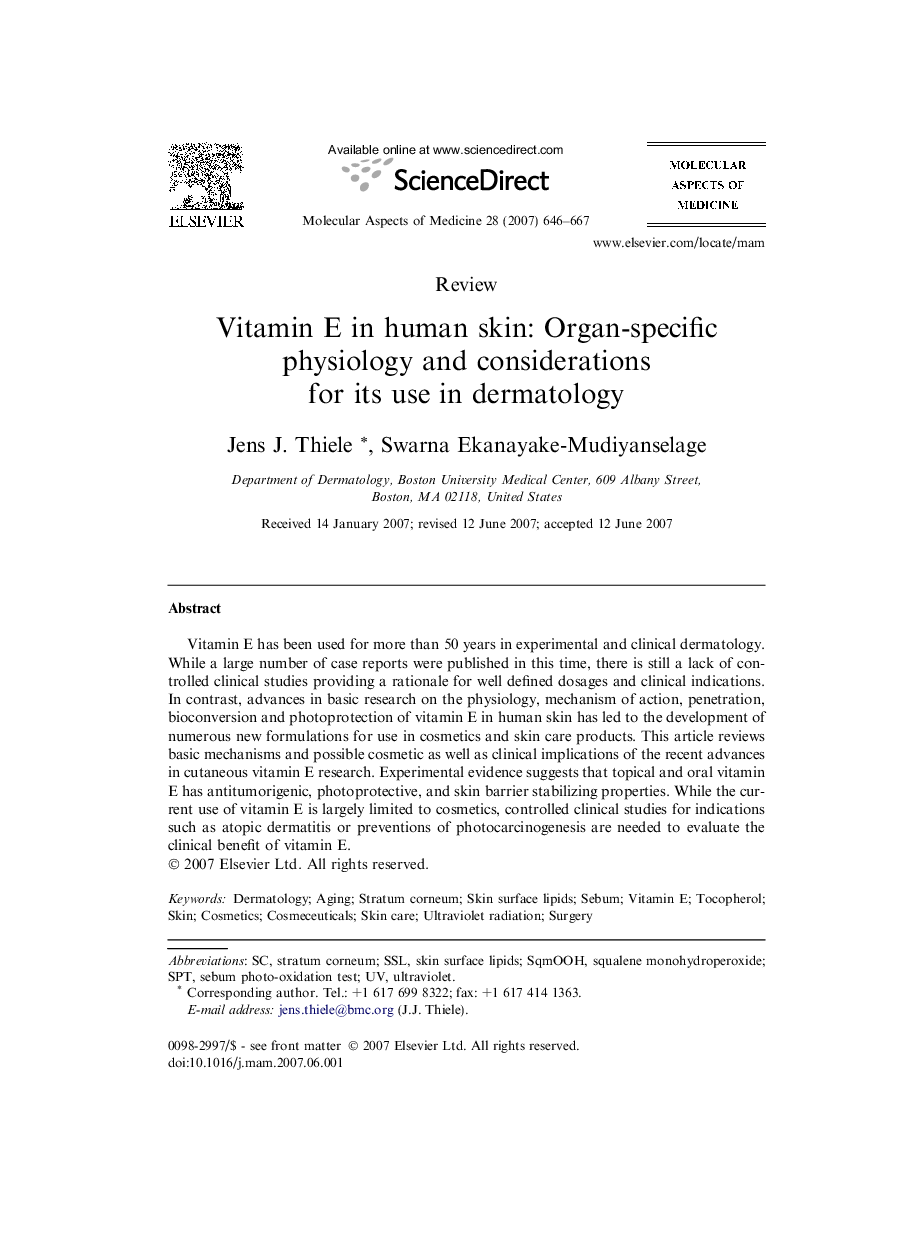| Article ID | Journal | Published Year | Pages | File Type |
|---|---|---|---|---|
| 1995871 | Molecular Aspects of Medicine | 2007 | 22 Pages |
Vitamin E has been used for more than 50 years in experimental and clinical dermatology. While a large number of case reports were published in this time, there is still a lack of controlled clinical studies providing a rationale for well defined dosages and clinical indications. In contrast, advances in basic research on the physiology, mechanism of action, penetration, bioconversion and photoprotection of vitamin E in human skin has led to the development of numerous new formulations for use in cosmetics and skin care products. This article reviews basic mechanisms and possible cosmetic as well as clinical implications of the recent advances in cutaneous vitamin E research. Experimental evidence suggests that topical and oral vitamin E has antitumorigenic, photoprotective, and skin barrier stabilizing properties. While the current use of vitamin E is largely limited to cosmetics, controlled clinical studies for indications such as atopic dermatitis or preventions of photocarcinogenesis are needed to evaluate the clinical benefit of vitamin E.
